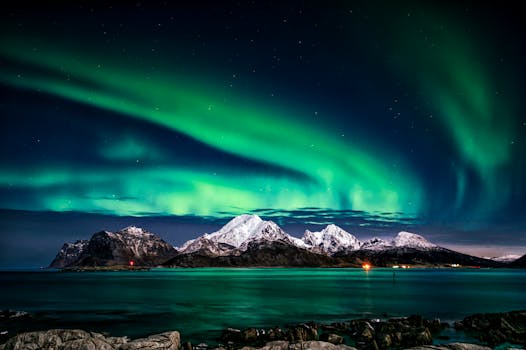Discovering the Fjords of Norway

Norway's fjords are world-renowned natural wonders, offering breathtaking landscapes that draw visitors from around the globe. Carved by glaciers during the Ice Age, these deep, narrow inlets are surrounded by towering cliffs and lush greenery, creating a dramatic contrast that captivates all who visit. The fjords are not only stunning in their beauty but also rich in cultural and historical significance, making them a must-visit destination for travelers seeking both adventure and tranquility.
Geographical Features of Norway's Fjords
The fjords of Norway are primarily located along the western coast, stretching from Stavanger in the south to Tromsø in the north. These glacially-formed valleys extend inland from the sea, creating sheltered waterways that can reach depths of over 1,300 meters. The Sognefjord, often referred to as the "King of the Fjords," is the longest and deepest fjord in Norway, extending 205 kilometers inland and reaching depths of 1,308 meters.
Another notable fjord is the Hardangerfjord, known for its picturesque orchards and vibrant cultural heritage. This fjord stretches 179 kilometers inland and is particularly famous for its springtime fruit blossoms. The Geirangerfjord, a UNESCO World Heritage site, is celebrated for its stunning waterfalls and steep cliffs that rise over 1,000 meters above sea level.
The unique geographical features of these fjords make them ideal for various outdoor activities such as kayaking, hiking, and fishing. Additionally, the surrounding areas are home to diverse wildlife, including seals, porpoises, and numerous bird species.
Cultural Significance and History
The fjords have played a crucial role in Norway's history and culture. They served as important transportation routes for the Vikings during the Middle Ages, allowing them to navigate through the rugged landscape with ease. Many small villages along the fjords still retain their traditional charm, offering visitors a glimpse into Norway's past.
Local legends and folklore are deeply intertwined with the fjords. For instance, the Nærøyfjord is named after Njord, the Norse god of the sea. These stories add a mystical element to the already enchanting scenery.
The region's cultural heritage is also reflected in its architecture. Traditional stave churches, such as those found in Borgund and Urnes, are prime examples of medieval wooden construction and are situated near several major fjords. These churches have been preserved over centuries and offer insight into early Norwegian craftsmanship and religious practices.
Popular Activities
Exploring Norway's fjords offers a variety of activities suited for all types of travelers:
- Hiking: Trails like the Pulpit Rock (Preikestolen) offer breathtaking views after a challenging hike.
- Kayaking: Paddle through serene waters surrounded by towering cliffs.
- Cruises: Fjord cruises provide an easy way to see multiple fjords without strenuous activity.
- Fishing: Rich marine life makes fishing a popular pastime.
- Sightseeing: Visit iconic sites like the Briksdal Glacier or Stegastein viewpoint.
Travel Tips
When planning a trip to Norway's fjords, consider these tips:
- Best Time to Visit: Late spring to early autumn (May to September) offers mild weather and longer daylight hours.
- Transportation: Renting a car provides flexibility to explore at your own pace. Alternatively, public transport options like ferries and trains are well-connected.
- Packing Essentials: Bring layered clothing to adapt to changing weather conditions. Waterproof gear is essential due to frequent rain showers.
- Local Cuisine: Try traditional dishes such as fresh seafood, reindeer meat, and local cheeses.
Norway's fjords offer an unparalleled blend of natural beauty, cultural heritage, and outdoor adventure. From their dramatic landscapes carved by glaciers to their rich historical significance tied to Viking routes and local folklore, these fjords provide an enriching travel experience. Whether you're hiking up steep trails for panoramic views or cruising through calm waters surrounded by cliffs, there is something for everyone in this stunning part of the world.